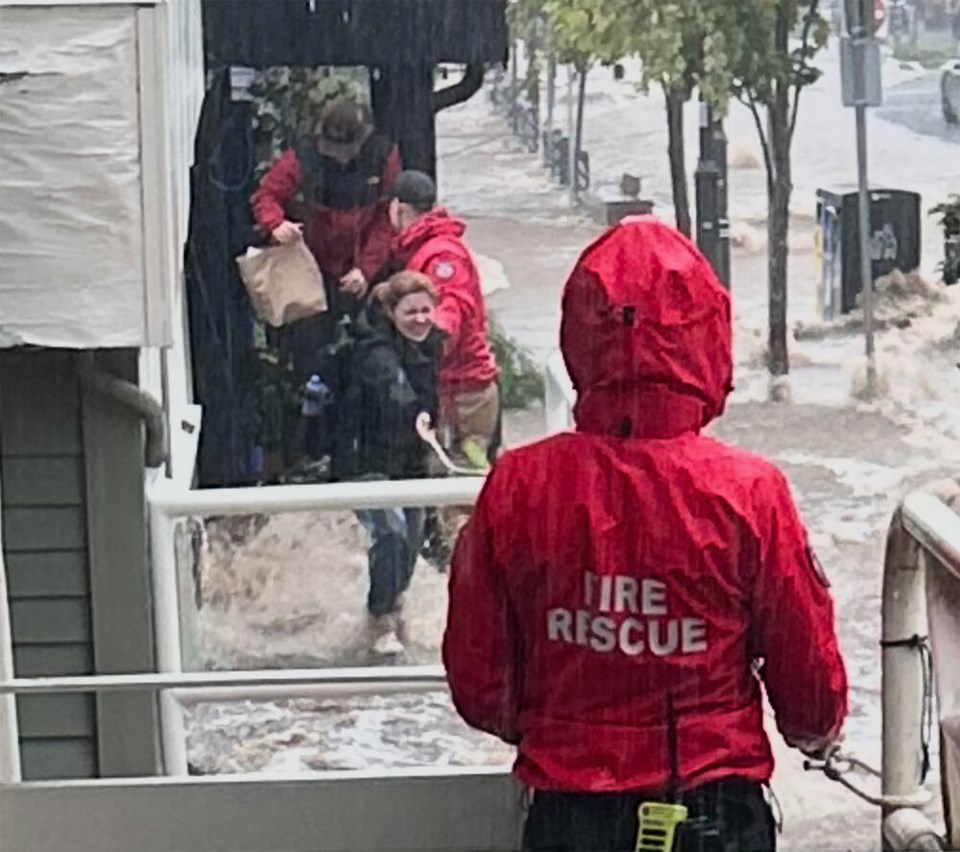The North Shore’s municipalities and First Nations are getting close to $1 million to help draw up more detailed plans in the increasingly likely event of one or more climate related disasters striking.
Last week the Ministry of Emergency Management and Climate Readiness announced $997,000 in funding for North Shore Emergency Management.
NSEM director Emily Dicken said there is no shortage of projects that could be carried out in the name of disaster mitigation, but there is limited funding and stiff competition among municipalities. Over the next three years, the provincial grant money will go to coming up with a risk-reduction action plan on which the local governments and First Nations are in full co-ordination as a region.
“This is a massive opportunity for all three North Shore municipalities to truly enhance resilience and do a lot of work around disaster risk reduction and mitigation,” Dicken said. “When we have really deep and detailed plans, we’re able to make much better-informed decisions.”
The upshot may be future projects that include physical disaster mitigation like slope stabilization works or better contingency planning for the municipalities to maintain operations following a disaster.
Dicken said there’s also work to be done to better understand the risks of multiple hazards arising at the same time.
“We know in our changing climate that when we have greater, stronger, more frequent atmospheric rivers, after a wildfire, those atmospheric rivers could potentially become much more catastrophic, and landslide risk could skyrocket,” she said.
Ultimately, she said, North Shore residents will be safer in the future as a result.
“We recognize that by investing in mitigation, it actually increases resilience, reduces vulnerability, and enables North Shore residents to move through disaster events, hopefully with less consequences to their homes, to their families, and enables them to recover from disaster events in a much smoother and easier way,” she said. “For every dollar that we spend on mitigation, it comes back to us six-fold in terms of reducing risk for response.”
In the same round of grant funding, Metro Vancouver nabbed $300,000 for seismic hazard and stability assessments of the Rice Lake dams, which are considered “very high consequence” under B.C.’s dam safety regulations.
While the lake in Lower Seymour Conservation Reserve is naturally occurring, it grew in size over the years as various dams were constructed to support logging and municipal water infrastructure.
Though the lake is used purely for recreational purposes now, the 1950s earth embankment dams remain. Because they are in a recreational area, the regulations require that they receive a higher level of risk management, including inspection and testing. At full capacity, the lake holds 230,000 cubic metres of water.
“The funding provided by the province will support work that includes collecting and testing soil samples from the dams, and advanced computer modelling to simulate how the dams would behave during an earthquake. These studies will help determine whether any upgrades are needed to maintain public safety and the long-term resilience of this infrastructure,” a statement from Ian Manning, Metro Vancouver’s director of dam safety, read.
The province is putting up roughly $40 million for 61 projects around B.C.
“I regularly hear from community members who want to know more about how prepared the North Shore is for a disaster, because the more prepared we are, the faster we can act during crises – saving lives and preserving our communities,” said North Vancouver-Lonsdale MLA Bowinn Ma. “I’m incredibly grateful for the work our three North Shore municipalities do on this front with the support of our government.”
[email protected]
twitter.com/brentrichter
brentrichter.bsky.social
Want to stay updated on North Vancouver and West Vancouver news? Sign up for our free daily newsletter.



